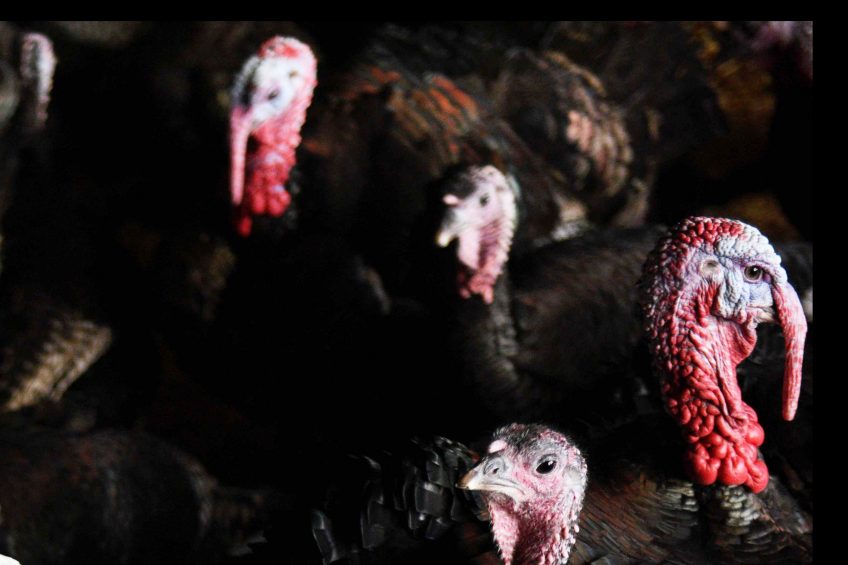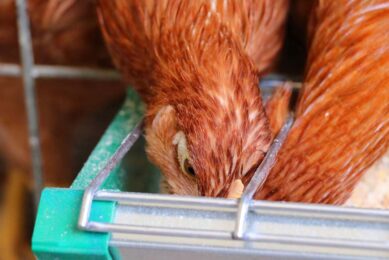Farmers should be wary of new rules on foot condition

At the latest Turkey Science and Production Conference a session was held on the latest research into Foot Pad Dermatitis amid concerns that new EU welfare legislation may be imminent.
The European turkey sector should get ready for the possibility of new welfare rules requiring the measurement of foot pad lesion in the processing plant, according to Edinburgh University’s Paul Hocking.
Dr Hocking explained that European legislation already required the measurement of foot pads dermatitis (FPD) scores as a means of assessing welfare in broilers, and it could be assumed that the same approach would eventually be adopted for turkeys.
“We need to be prepared in case it does,” he said.
However, it was not clear whether foot pad scores were reliable measurements of turkey welfare.
“It is not clear what aspect of welfare such a scheme is meant to assess. Possibilities include control of stocking rates, improving litter quality, minimising the number of farms practising intensive husbandry, or simply preventing painful dermatitis.
“Maybe it is these things, but it is certainly a blunt instrument for improving management,” he suggested.
Freedom from pain
His team ran a series of experiments to determine whether FPD was in fact painful to the birds, by using behavioural measurements combined with the administration of painkillers. They also researched whether low scores were less painful, and therefore indicated better welfare.
“It might seem a bit unreasonable to suggest that a small lesion is any less painful than a big one,” he suggested.
His research examined the welfare implications of FPD by using behavioural observations in turkeys with increasing severity of FPD, in conjunction with different analgesics (painkillers).
The theory was that birds with the higher FPD scores (more severe lesions) would show behavioural changes that could be attributed to pain, but would then behave more like the low-scoring birds when given painkillers.
The behaviour patterns measured included standing, resting, walking, and preening. The day before observations began, dry shavings were added to all the test pens, so that litter was of the same quality for all the treatments.
No significant difference
The unexpected result was that there were no significant differences between turkeys with different FPD scores for any of the behaviour traits measured. Furthermore, the administering of analgesics appeared to have no effect on behaviour.
“The experimental evidence for foot pad pain was lacking, or at best uncertain,” concluded Dr Hocking.
“However, there are experimental issues to be resolved about how you measure painfulness, and because they are in a pen the social interactions and ability to overcome painful stimulus is quite high.
He went on, “It’s unlikely that, given the pathology of the extreme lesions at least, that these big ulcerations are not painful, but the evidence is lacking.”
Vet Stephen Lister was not surprised at these results: “When I see birds with very large lesions they are often big birds which seem to have thrived in other ways.
“My take on this is that FPD, perhaps like in broilers, is a proxy way of assessing what’s happened on the farm in terms of litter moisture and other things connected with welfare, rather than pododermatitis itself.”
Another researcher, Teun Veldkamp from Wageningen University Netherlands, had found that foot pad scores in turkeys could be modified by changes in diet.
The prevalence of FPD in turkeys was closely related to litter moisture, and this was affected by the amount and consistency of faeces, which in turn was affected by diet composition, explained Dr Veldkamp. Soyabean meal contained high levels of potassium which may adversely affect the consistency of the excreta.
Diet type
“Soya diets resulted in higher litter moisture and higher scores for FPD lesions compared with non-soya diets. Feed intake and body weight gain in turkeys fed on soya diets was higher than those fed non-soya diets.”
Although litter moisture showed no difference between wheat- or maize-based diets, the scores for FPD lesions for turkeys fed on maize diets was higher than those fed on wheat diets. Also, feed intake and body weight gain on wheat diets was higher than on maize diets.
Lenny Vinco from Italy’s National Reference Centre for Animal Welfare (IZSLER) looked more widely at the factors influencing wet litter. He predicted that on-farm assessment of litter moisture by visual inspection and scoring could be used as an essential animal welfare indicator assisting management, in preventing the occurrence of FPD.
“FPD in commercial turkey flocks is associated primarily with wet litter,” he said. In turn litter quality was affected by stocking density, air temperature and humidity, season, the consistency and amount of excreta, and drinker design.
“A large amount of work has been conducted on FPD in broilers which has led to its identification as the most reliable animal-based parameter in welfare assessment, while there is less information on turkeys.
Dr Vinco pointed out that growing period characteristics like feed utilisation, body weight gain, body pressure on the feet, microbial activity in litter, and housing conditions were all different for turkeys, and thus results from broilers could not be extrapolated.
“There is a concern that scoring values used for broilers may not be acceptable for turkeys.”
And although FPD-scoring was a reliable welfare indicator, since it gave a picture of the conditions in which animals had been raised, it was only after the damage was done, said Dr Vinco.
More useful measure
“It could therefore be much more useful to identify a resource-based indicator that can indicate how to prevent or reduce the occurrence of FPD, rather than assess them at the end of the production cycle.”
A survey was conducted over a one year period on two major Italian integrators to pinpoint major factors affecting FPD by measuring environmental variables on farm, and then scoring at the processing plant.
The most frequent FPD scores were at the high end of the scoring range, with around 50% at ‘3’ and over 33% at ‘4’.
Drinker type, drinker number and litter type were found to be the main factors affecting litter moisture and thus FPD incidence.
Drinker type
“Over the last years, there has been an increase in the number of nipple-type drinkers in commercial turkey production which, based on our investigation, concur in the reduction of FPD, particularly when used in the right number.
“This could be explained by the overcrowding and competition at the drinker probably leading to an increase in water spillage.”
Wood shavings were still the most common bedding material employed, but the study showed it gave good results only when used with other materials such as rice husks or coconut.
Overall litter moisture was confirmed to be directly correlated with FPD incidence.
“Therefore, its measurement could be used as an invaluable instrument for the prevention of the occurrence of FPD,” added Dr Vinco.
Furthermore, on-farm visual monitoring and scoring of litter appeared to be more reliable in predicting the outcome of FPD scores than laboratory methods.
Join 31,000+ subscribers
Subscribe to our newsletter to stay updated about all the need-to-know content in the poultry sector, three times a week. Beheer
Beheer








 WP Admin
WP Admin  Bewerk bericht
Bewerk bericht